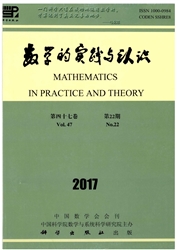

 中文摘要:
中文摘要:
基于三阶段DEA(数据包络分析)模型测算了我国2009年29个省市的全要素能源效率及其分解变量.研究结果表明:环境因素对于各地区全要素能源效率有显著影响.各地区政府财政支出与对外开放程度的提高是全要素能源效率改善的有利因素;各地区第三产业增加值占GDP的比重与各地区工业总产值占中国所有工业总产值的比重的增加是全要素能源效率提高的不利因素.另一方面在剔除环境和随机因素影响后,全国平均规模效率的降低是全要素能源效率的下降主要因素.最后由全要素能源效率的聚类分析结果发现,我国全要素能源效率的区域差异明显,东部表现最优,中部次之,西部最次.
 英文摘要:
英文摘要:
Based on the three-stage Data Envelopment Analysis (DEA) model, this paper researches on the total factor energy efficiency of China's 29 provinces in 2009. The results demonstrate that environmental factors for each region have a significant impact on total factor energy efficiency, the level of regional government spending and openness are beneficial to total factor energy efficiency; The tertiary industry share of GDP in each region and the regional industrial output value accounted for the proportion of all industrial output value of China increase the unfavorable factors in total factor energy efficiency. On the other hand, excludingenvironmental and random factors, The decline of average scale efficiency is the main factor of the decline in total factor energy efficiency. Finally, total factor energy efficiency of the cluster analysis shows that total factor energy efficiency of China's regional differences are significant, the best performance of the eastern, central, followed by the worst western.
 同期刊论文项目
同期刊论文项目
 同项目期刊论文
同项目期刊论文
 期刊信息
期刊信息
